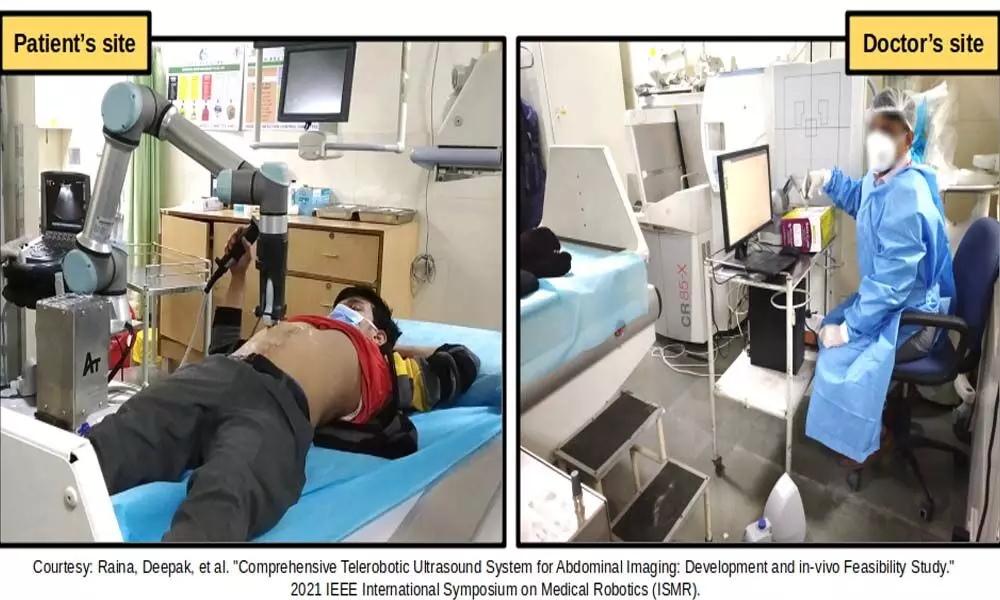AIIMS, IIT jointly develop Telerobotic Ultrasound system
The new system allows remote ultrasound access through a robotic arm and it’ll allow a better outreach of ultrasound imaging to remote rural areas of India, says Dr Chandrashekhara, AIIMS-New Delhi
image for illustrative purpose

Premiere institution Indian Institute of Technology (IIT), New Delhi, recently announced its collaboration with All India Institute of Medical Sciences (AIIMS), on the development of technology, which would enable ultra-sound imagine from remote location.
The jointly developed TeleroboticUltrasound System was built by the research team at IIT Delhi, led by Professor Chetan Arora and ProfessorSubirKumar Saha, while Dr Chandrashekhara was responsible from AIIMS and Suvayan Nandi was the lead contributor from Addverb Technologies.
Unlike the traditional set-up where the Radiologist stands in close contact with the patient for the entire scan duration, the new system allows remote ultrasound access through a robotic arm. According to the research team, this ultrasonography is a non-invasive, non-ionizing, cost-effective, rapid, bedside, and readily available modality with immense use inpoint-of-care and follow-up examinations.
"This requirement came to us from the faculty of AIIMS New Delhi, when the whole nation was on lockdown in June 2020,and the number of cases and deaths was rising rapidly. The prevailing situation impacted regular healthcare services, especially those involving direct physical contact with patients like ultrasound scanning.We wanted to contribute to the safety of healthcare professionals by leveraging our expertise in robotictechnology," said Prof. Chetan Arora and Prof. Subir Kumar Saha from IIT Delhi.
Adding to this, Dr Chandrashekhara, AIIMS, New Delhi, said, "This system will promote healthcare and make our systemmore prepared for further pandemics. Besides its role in the pandemic, it will allow a better outreach of ultrasound imaging to remote rural areas of India. The radiologist manipulates the ultrasound proberemotely from a remote location, acquires the ultrasonographs, and then transmits them to the monitorsat the doctor's end through a Wi-Fi network. Sitting at a remote location, the doctor can visualize all the images and assess the patient, similar to a clinical setting. The facility can also be extended for globaloutreach."
Other contributors in the research team include Deepak Raina, PMRF Research Scholar, IIT Delhi, Dr.Krithika Rangarajan, Dr. Ayushi Agarwal, AIIMS, New Delhi; and Hardeep Singh, Addverb.
Raina stated that controlarchitecture had been developed to teleoperate the ultrasound probe attached to the robotic arm whileensuring the patient's safety and the quality of ultrasound images.

